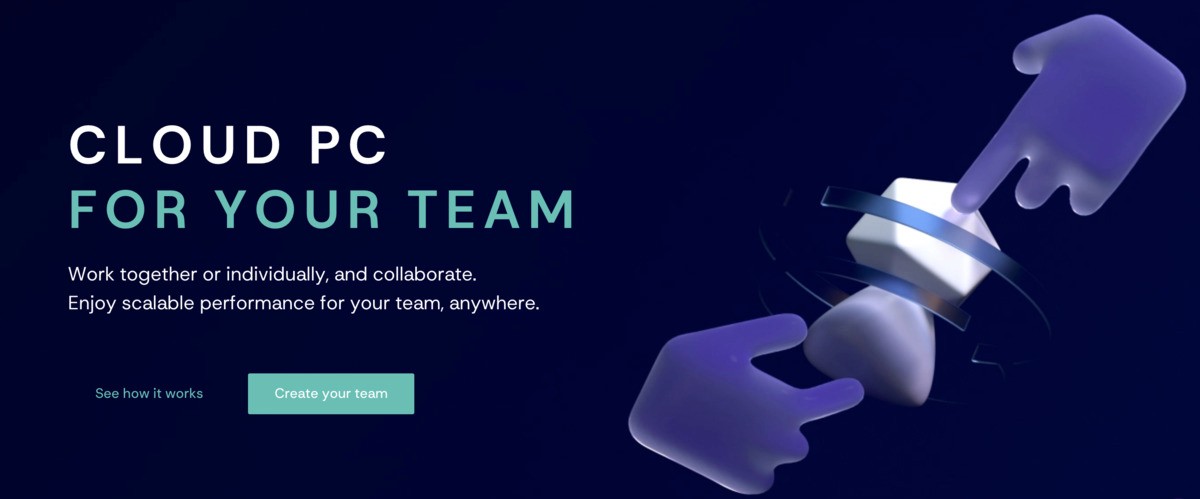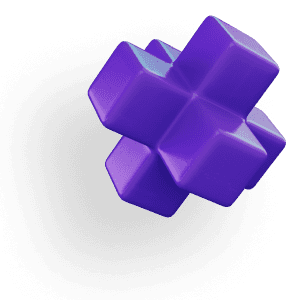Instant Connection for Pixel Streaming
— New Feature Automated Setup





Essential Tools for IT Managers to Effectively Manage Enterprise-Level Teams
Essential Tools for IT Managers to Effectively Manage Enterprise-Level Teams
Essential Tools for IT Managers to Effectively Manage Enterprise-Level Teams
Published on May 25, 2023
Table of Contents
Enterprise-level IT managers often work across multiple locations, time zones, and languages. This makes communication and collaboration even more challenging. Fortunately, many tools and software solutions can help IT managers manage their teams more efficiently.
Cloud-based project management software, communication tools, video conferencing software, and automated task-tracking software are all valuable tools that IT managers can use to enhance their team management, collaboration, and productivity in large-scale IT environments.
Ultimately, one of the best tools that IT managers can use is to listen to their teams to get regular feedback loops on the tools they choose to use and the processes they are implementing. Learn more about effective communication for remote workers here.
This blog details some essential tools and software solutions to complete your toolkit for team management, from task-tracking software to communication tools.

Photo by Israel Andrade on Unsplash
Project Management Software
Project management is one of the essential functions of IT managers for healthy and functional team management, but choosing the right tools and software can be overwhelming when the options are ever-changing and always being updated.
Confluence 🔗
Atlassian, a global software company, offers many products catered towards software development and IT management, serving millions of users, including numerous enterprise-level IT managers.
One such notable product is Confluence, a highly scalable and comprehensive documentation system adept at documenting anything from IT processes to software development best practices. Equally accessible to IT professionals and non-technical users alike, Confluence stands out as an ideal choice for enterprise-level IT managers seeking an effective documentation system, significantly enhancing the documentation of IT systems and processes.
Confluence is primarily a knowledge management tool accessible to all users. Still, it also has various features such as document creation, sharing, and collaboration, making it an ideal tool for enterprise-level IT managers to use to create and store reports and so much more.
Jira 🔗
Another Atlassian product, Jira, is a project management software system designed to help teams organize and manage projects more efficiently. The software has features that can help teams track issues, bugs, and features, manage sprints, manage releases, and create agile roadmaps.
Jira’s main features include workflow automation, issue tracking, and reporting.
Issue tracking: Jira allows teams to track bugs and issues, set due dates, and assign issues to team members.
Project planning: Jira can be used to plan projects by creating boards and lists.
Communication: Jira provides a central place for teams to communicate about issues, including file sharing, comments, and chat.
Reporting: Jira provides a variety of reports that can help teams to track the progress of projects and identify areas for improvement.
Wrike 🔗
A highly comprehensive and scalable documentation system is Wrike, which is one of the leading project management platforms. Where others are more lightweight, Wrike provides a system with multiple unique features that IT managers will appreciate, including robust task management capabilities and an intuitive yet customizable interface out of the box.
Wrike offers task management and powerful reporting capabilities, allowing IT managers to keep track of projects in one tool rather than a mixture of other systems. This streamlines processes and allows team members to focus on tasks rather than data entry.
Effective Communications Solutions
When it comes to communication across globally distributed teams crossing multiple time zones, async solutions are always top of mind, especially when language barriers and different levels of expertise are involved.
Paying close attention to different communication preferences and needs is key. Observing how your team communicates will indicate how to improve, where the tools are falling behind, and how your team can catch up.
Beyond how to improve and who needs improvement, asking why these tools and communication between team members need assistance is a key component of this process.
Slack 🔗
Slack is one of the most popular communication tools for distributed teams, focusing on asynchronous communication and a long list of features for customization perfect for distributed teams.
Some of the most notable features IT managers should be aware of when using Slack are:
Enterprise Grid - a self-service subscription-based solution for IT teams to create and manage their communication channels. Enterprise Grid offers an easy solution for single sign-on and integrates with LDAP and data sovereignty, creating secure access to company data.
Slack is SOC 2 Type 2, ISO 27001, and GDPR compliant. This means that Slack has met the requirements of these security standards.
Admin tasks made easy - Slack has a built-in admin center that allows IT managers to create, edit, and manage access to apps, users, and channels.

Photo by Austin Distel on Unsplash
Microsoft Teams 🔗
For teams traditionally used to the Microsoft Office suite, Teams is an exceptional option for communicating and collaborating with colleagues. If you’re familiar with Slack, Teams is a more traditional, centralized communication platform.
Microsoft Teams also delivers scalability, security, and flexibility to businesses of all sizes, making it a great option for IT managers. It’s designed to enhance productivity and collaboration by offering a single place to create, store, and access all documents and data, particularly for those already using Microsoft 365 tools. Because team members can share files directly through Teams they’ve created in other tools they already use it reduces the barrier to entry and encourages productivity.
Vagon Teams 🔗
Vagon Teams is a subscription-based service that effectively allows teams to spin up highly functional cloud computers to offer powerful access to the most resource-demanding programs and services used by Architects, CAD designers, agencies, animators, and researchers.
With Vagon Teams, you can assign cloud workstations to team members to provide them with a cost-effective way to work with large data sets, render images, and create animations all with one easy-to-use solution that runs on even the most basic of devices from a Macbook down to a Chromebook.
This makes remote project management and communications access to large, complex files and data sets easier and faster for enterprise-level team management that can be accessed from anywhere your team works best.

IT Managers Look Beyond Tools and Projects
As IT Managers utilize these tools and services to manage enterprise-level teams effectively, choosing the right tools that fit your team dynamic and needs is increasingly important. No two teams are the same, so regular feedback and communication directly with team members is vital for future success.
Security, functionality, ease of use and barriers to entry for new team members are all key to implementing the right tools. The solutions listed in this blog will certainly put you on the right track for effective leadership, particularly for distributed enterprise teams.
Though the tools and solutions discussed here are essential for effective communication and management, looking beyond the tech being used is essential to the success of an IT team. For more on this topic, check out our recent blog post here.
Enterprise-level IT managers often work across multiple locations, time zones, and languages. This makes communication and collaboration even more challenging. Fortunately, many tools and software solutions can help IT managers manage their teams more efficiently.
Cloud-based project management software, communication tools, video conferencing software, and automated task-tracking software are all valuable tools that IT managers can use to enhance their team management, collaboration, and productivity in large-scale IT environments.
Ultimately, one of the best tools that IT managers can use is to listen to their teams to get regular feedback loops on the tools they choose to use and the processes they are implementing. Learn more about effective communication for remote workers here.
This blog details some essential tools and software solutions to complete your toolkit for team management, from task-tracking software to communication tools.

Photo by Israel Andrade on Unsplash
Project Management Software
Project management is one of the essential functions of IT managers for healthy and functional team management, but choosing the right tools and software can be overwhelming when the options are ever-changing and always being updated.
Confluence 🔗
Atlassian, a global software company, offers many products catered towards software development and IT management, serving millions of users, including numerous enterprise-level IT managers.
One such notable product is Confluence, a highly scalable and comprehensive documentation system adept at documenting anything from IT processes to software development best practices. Equally accessible to IT professionals and non-technical users alike, Confluence stands out as an ideal choice for enterprise-level IT managers seeking an effective documentation system, significantly enhancing the documentation of IT systems and processes.
Confluence is primarily a knowledge management tool accessible to all users. Still, it also has various features such as document creation, sharing, and collaboration, making it an ideal tool for enterprise-level IT managers to use to create and store reports and so much more.
Jira 🔗
Another Atlassian product, Jira, is a project management software system designed to help teams organize and manage projects more efficiently. The software has features that can help teams track issues, bugs, and features, manage sprints, manage releases, and create agile roadmaps.
Jira’s main features include workflow automation, issue tracking, and reporting.
Issue tracking: Jira allows teams to track bugs and issues, set due dates, and assign issues to team members.
Project planning: Jira can be used to plan projects by creating boards and lists.
Communication: Jira provides a central place for teams to communicate about issues, including file sharing, comments, and chat.
Reporting: Jira provides a variety of reports that can help teams to track the progress of projects and identify areas for improvement.
Wrike 🔗
A highly comprehensive and scalable documentation system is Wrike, which is one of the leading project management platforms. Where others are more lightweight, Wrike provides a system with multiple unique features that IT managers will appreciate, including robust task management capabilities and an intuitive yet customizable interface out of the box.
Wrike offers task management and powerful reporting capabilities, allowing IT managers to keep track of projects in one tool rather than a mixture of other systems. This streamlines processes and allows team members to focus on tasks rather than data entry.
Effective Communications Solutions
When it comes to communication across globally distributed teams crossing multiple time zones, async solutions are always top of mind, especially when language barriers and different levels of expertise are involved.
Paying close attention to different communication preferences and needs is key. Observing how your team communicates will indicate how to improve, where the tools are falling behind, and how your team can catch up.
Beyond how to improve and who needs improvement, asking why these tools and communication between team members need assistance is a key component of this process.
Slack 🔗
Slack is one of the most popular communication tools for distributed teams, focusing on asynchronous communication and a long list of features for customization perfect for distributed teams.
Some of the most notable features IT managers should be aware of when using Slack are:
Enterprise Grid - a self-service subscription-based solution for IT teams to create and manage their communication channels. Enterprise Grid offers an easy solution for single sign-on and integrates with LDAP and data sovereignty, creating secure access to company data.
Slack is SOC 2 Type 2, ISO 27001, and GDPR compliant. This means that Slack has met the requirements of these security standards.
Admin tasks made easy - Slack has a built-in admin center that allows IT managers to create, edit, and manage access to apps, users, and channels.

Photo by Austin Distel on Unsplash
Microsoft Teams 🔗
For teams traditionally used to the Microsoft Office suite, Teams is an exceptional option for communicating and collaborating with colleagues. If you’re familiar with Slack, Teams is a more traditional, centralized communication platform.
Microsoft Teams also delivers scalability, security, and flexibility to businesses of all sizes, making it a great option for IT managers. It’s designed to enhance productivity and collaboration by offering a single place to create, store, and access all documents and data, particularly for those already using Microsoft 365 tools. Because team members can share files directly through Teams they’ve created in other tools they already use it reduces the barrier to entry and encourages productivity.
Vagon Teams 🔗
Vagon Teams is a subscription-based service that effectively allows teams to spin up highly functional cloud computers to offer powerful access to the most resource-demanding programs and services used by Architects, CAD designers, agencies, animators, and researchers.
With Vagon Teams, you can assign cloud workstations to team members to provide them with a cost-effective way to work with large data sets, render images, and create animations all with one easy-to-use solution that runs on even the most basic of devices from a Macbook down to a Chromebook.
This makes remote project management and communications access to large, complex files and data sets easier and faster for enterprise-level team management that can be accessed from anywhere your team works best.

IT Managers Look Beyond Tools and Projects
As IT Managers utilize these tools and services to manage enterprise-level teams effectively, choosing the right tools that fit your team dynamic and needs is increasingly important. No two teams are the same, so regular feedback and communication directly with team members is vital for future success.
Security, functionality, ease of use and barriers to entry for new team members are all key to implementing the right tools. The solutions listed in this blog will certainly put you on the right track for effective leadership, particularly for distributed enterprise teams.
Though the tools and solutions discussed here are essential for effective communication and management, looking beyond the tech being used is essential to the success of an IT team. For more on this topic, check out our recent blog post here.
Scalable Remote Desktop for your Team
Create cloud computers for your Team, manage their access & permissions in real-time. Start in minutes & scale.

Trial includes 1 hour usage + 7 days of
storage for first 2 seats.
Scalable Remote Desktop for your Team
Create cloud computers for your Team, manage their access & permissions in real-time. Start in minutes & scale.

Trial includes 1 hour usage + 7 days of
storage for first 2 seats.
Scalable Remote Desktop for your Team
Create cloud computers for your Team, manage their access & permissions in real-time. Start in minutes & scale.
Trial includes 1 hour usage + 7 days of
storage for first 2 seats.
Scalable Remote Desktop for your Team
Create cloud computers for your Team, manage their access & permissions in real-time. Start in minutes & scale.
Trial includes 1 hour usage + 7 days of
storage for first 2 seats.
Scalable Remote Desktop for your Team
Create cloud computers for your Team, manage their access & permissions in real-time. Start in minutes & scale.

Trial includes 1 hour usage + 7 days of
storage for first 2 seats.

Ready to focus on your creativity?
Vagon gives you the ability to create & render projects, collaborate, and stream applications with the power of the best hardware.

Vagon Blog
Run heavy applications on any device with
your personal computer on the cloud.
San Francisco, California
Solutions
Vagon Teams
Vagon Streams
Use Cases
Resources
Vagon Blog
The Best Render Settings for Blender 3D
Arcware vs Vagon Streams: Best Pixel Streaming Alternatives
How To Use FL Studio on a Cloud Computer
Reducing Latency in Virtual Desktops: 11 Fixes That Actually Work
PureWeb vs Vagon Streams: Best Alternative Pixel Streaming Platform
How To Use Photoshop On iPad
How To Fix Slow & Laggy Performance on AWS Workspaces VDIs?
Arcane Mirage vs Vagon Streams: Best Alternative Pixel Streaming Platform
The Best Unity Shortcuts
Vagon Blog
Run heavy applications on any device with
your personal computer on the cloud.
San Francisco, California
Solutions
Vagon Teams
Vagon Streams
Use Cases
Resources
Vagon Blog
The Best Render Settings for Blender 3D
Arcware vs Vagon Streams: Best Pixel Streaming Alternatives
How To Use FL Studio on a Cloud Computer
Reducing Latency in Virtual Desktops: 11 Fixes That Actually Work
PureWeb vs Vagon Streams: Best Alternative Pixel Streaming Platform
How To Use Photoshop On iPad
How To Fix Slow & Laggy Performance on AWS Workspaces VDIs?
Arcane Mirage vs Vagon Streams: Best Alternative Pixel Streaming Platform
The Best Unity Shortcuts
Vagon Blog
Run heavy applications on any device with
your personal computer on the cloud.
San Francisco, California
Solutions
Vagon Teams
Vagon Streams
Use Cases
Resources
Vagon Blog
The Best Render Settings for Blender 3D
Arcware vs Vagon Streams: Best Pixel Streaming Alternatives
How To Use FL Studio on a Cloud Computer
Reducing Latency in Virtual Desktops: 11 Fixes That Actually Work
PureWeb vs Vagon Streams: Best Alternative Pixel Streaming Platform
How To Use Photoshop On iPad
How To Fix Slow & Laggy Performance on AWS Workspaces VDIs?
Arcane Mirage vs Vagon Streams: Best Alternative Pixel Streaming Platform
The Best Unity Shortcuts
Vagon Blog
Run heavy applications on any device with
your personal computer on the cloud.
San Francisco, California
Solutions
Vagon Teams
Vagon Streams
Use Cases
Resources
Vagon Blog



